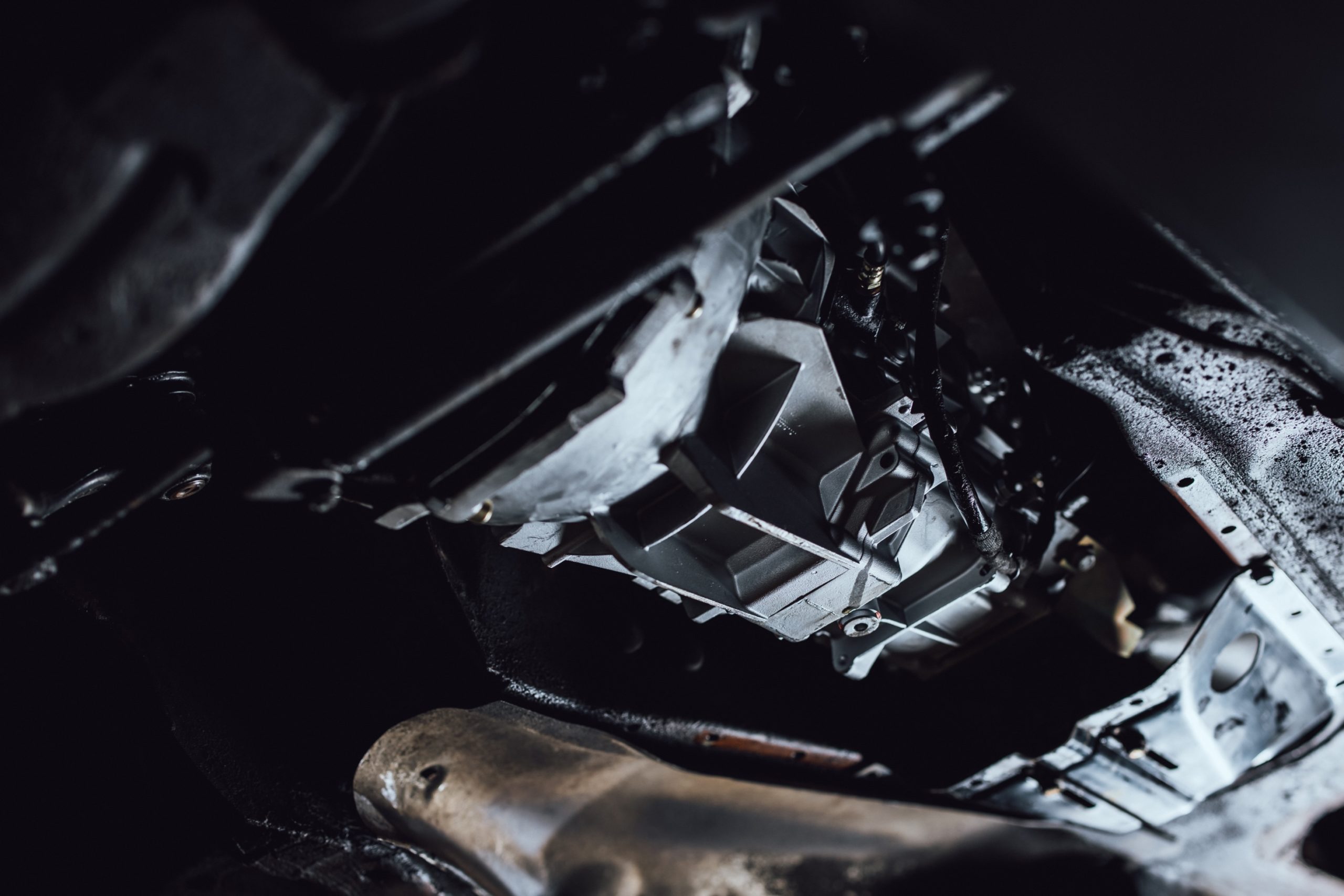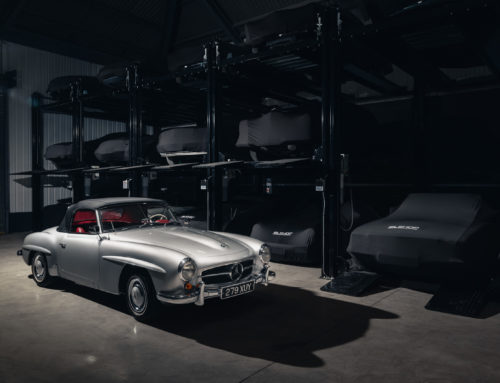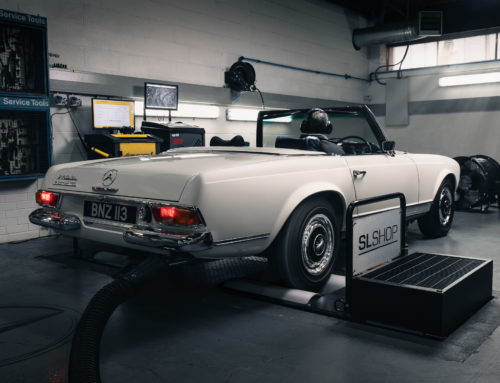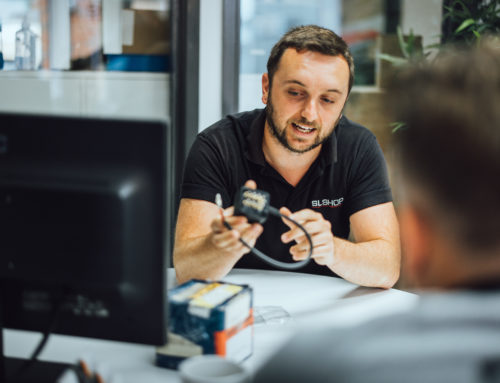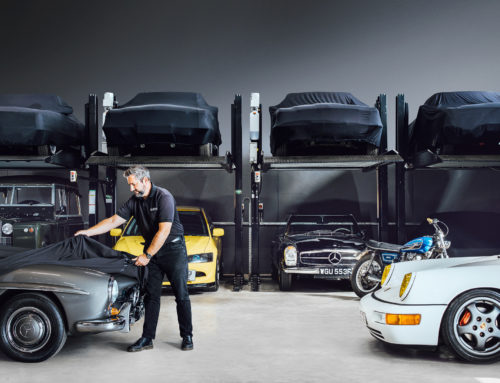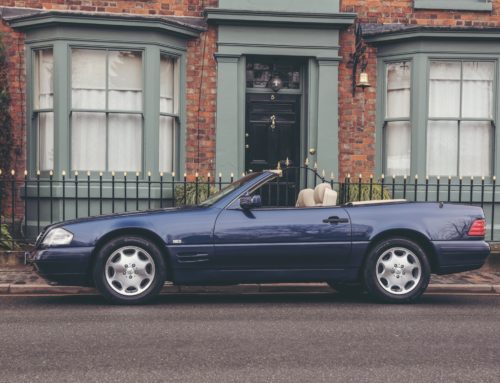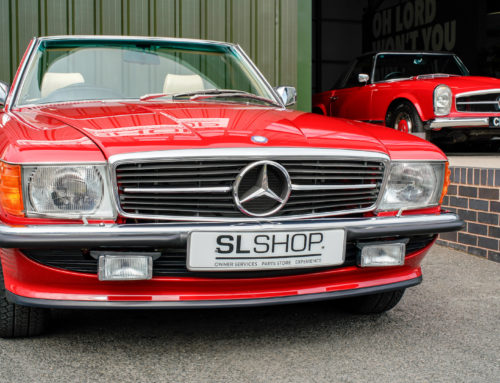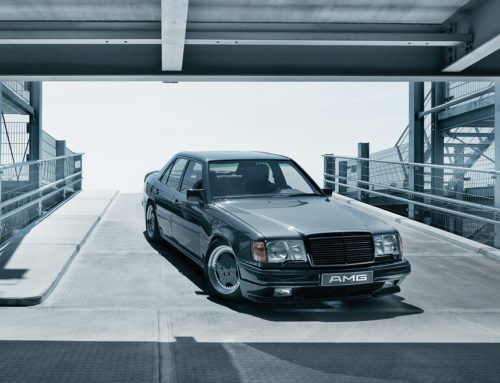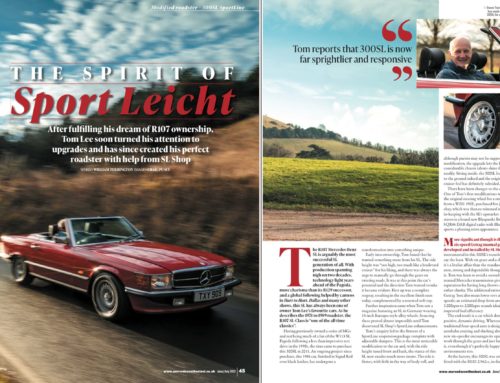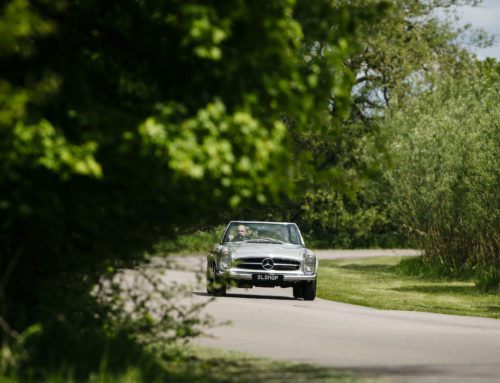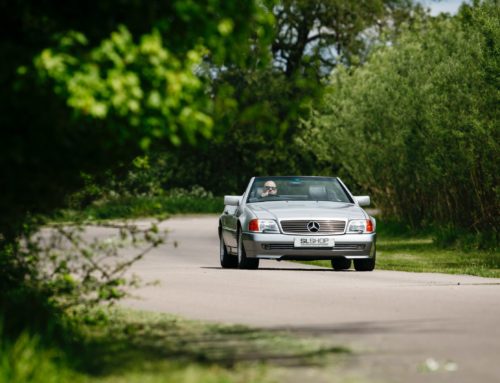We speak to the UK’s most qualified technicians about potential reasons why your classic Mercedes Automatic Gearbox is not changing gear.
From that first magical moment, an engineering and a societal seismic shift – the birth of the motorcar – Mercedes-Benz has been at the forefront of automotive excellence. Priced a considerable amount above most mass-produced passenger cars but below the stratospheric costs of hand-built, bespoke coachbuilding, Mercedes-Benz cars have, for decades, been considered best in class and, indeed, at times, the best automobile available.
Ground-breaking and exacting engineering has made that possible. Mercedes-Benz has always strived for excellence and progress in all aspects of the car’s design and build. That doesn’t mean, however, that problems don’t develop.
The gearbox is a complex and vital part of any car. As it transmits the engine’s torque to the drivetrain, the gearbox allows the vehicle to be driven at higher speeds and to cruise economically. Mercedes-Benzes have always enjoyed some of the smoothest and most reliable gearboxes available. But like any machine, wear and tear (and frequently the lack of maintenance) can place the gearboxes in what today’s lexicon might call a suboptimal condition.
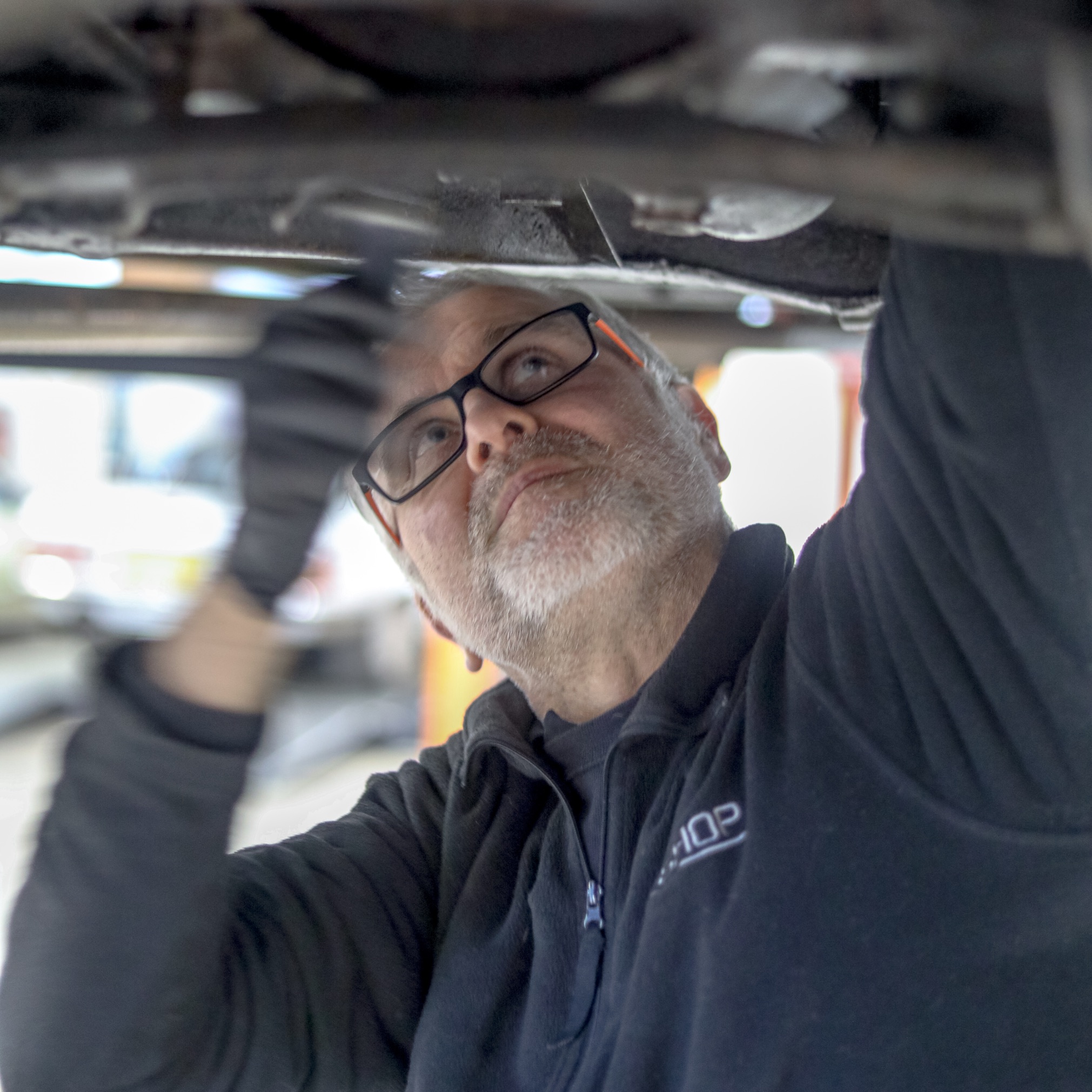
Paul Smith is the SLSHOP’s gearbox-guru. Trained by Mercedes-Benz on the pre-electronic generation of cars (and gearboxes), Paul has passionately dedicated himself to positioning the SLSHOP, through ever-increasing levels of competence and customer service, at the very top of the UK’s classic Mercedes-Benz landscape. “What we do here, at SLSHOP, is work which is getting increasingly difficult to find. The standards we set and the processes we follow are often more stringent than I remember at the dealer level. Management here at SLSHOP is passionate about our workshop outlining why a Mercedes automatic breadbox is not changing gear and offering repairs and servicing at unparalleled standards,” says Smith.
Whether you’re an enthusiast purchasing and maintaining your pride and joy at SLSHOP, or a workshop also committed to keeping these beautiful and valuable vintage cars on the road, for gearbox repairs and maintenance, the SLSHOP should be top of your contact list.
Focusing a little closer on the reasons why a Mercedes automatic gearbox doesn’t change gears or is sluggish, a few general points will always form the basis of Paul’s initial diagnosis. When dealing with older, non-electronic units, a combination of vacuum pressure, carried by a vacuum tube from the engine, and linkages, communicating the throttle position to the box, are both prime areas of concern.
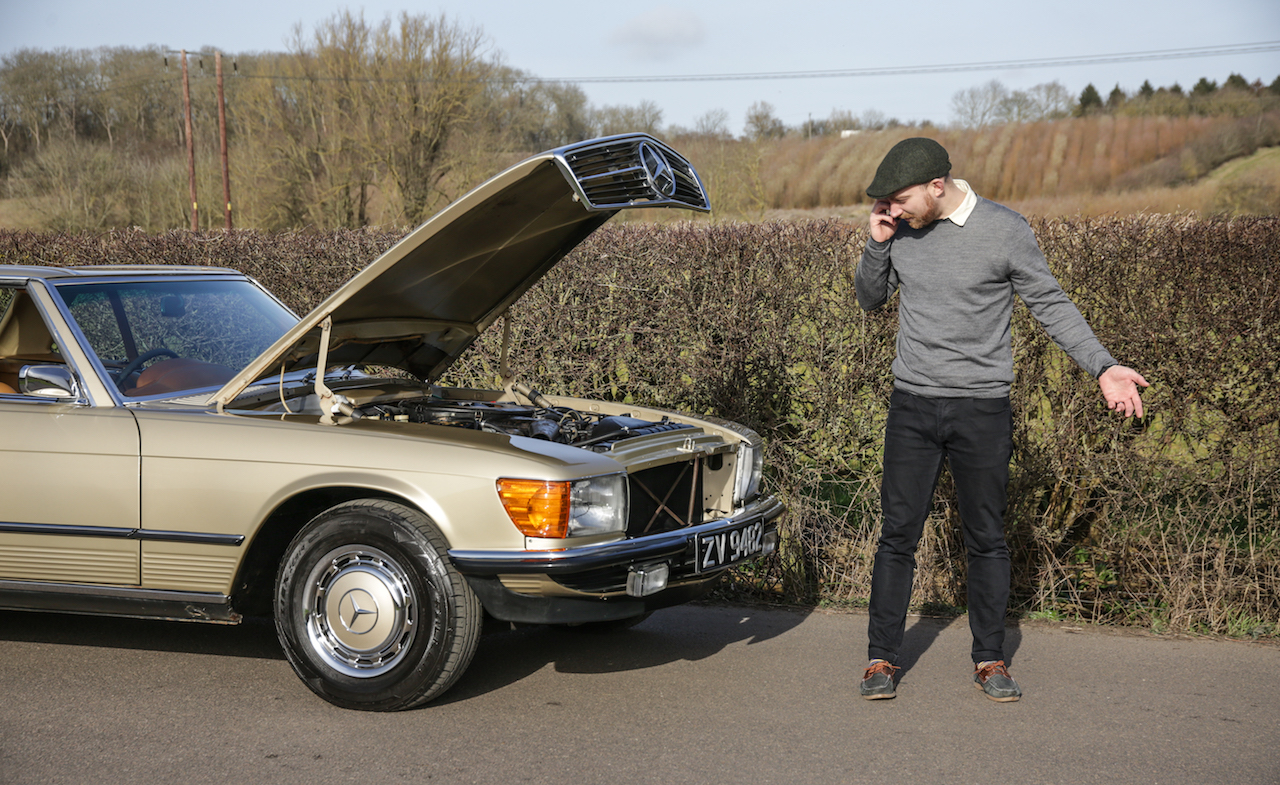
A sluggish gearbox performance could also be associated with the following:
1. Poor control parameters – adjustment of control cable and modulating pressure.
2. Poor throttle linkage set-up.
3. More extreme cases could be due to slipping clutch packs. This could be because of failed internal seals or the failure of abrasive components. An internal investigation of the transmission would be required.
Focusing specifically on the K4C 025 used from 1969 through 1972 – easily identified by its four-bolt transmission pan. Rpms, accelerator position and engine vacuum, regulate shift points on this version.
A metal vacuum tube runs from the intake manifold to the vacuum modulator on the right-side lower part of the gearbox. Additionally, a different linkage runs from the engine to the transmission. It controls modulator pressure and shift points depending on the accelerator position. During engine repairs or servicing, this linkage can be maladjusted, causing shift problems in the transmission.
As per manufacturer procedures, it is vital to set the engine linkages properly before performing linkage adjustments on the transmission. Once the engine accelerator linkages are set to specs, the transmission should shift as follows:
• With the selector in “D” and with light accelerator pedal input, the transmission should shift to 2nd at around 5-6 mph, then to 3rd at approximately 17-18 mph. The shift to 4th should be around 24 mph.
• At maximum throttle, but not kickdown, with the transmission in “D”, the shift from 1st to 2nd should occur at around 22 mph, the shift from 2nd to 3rd should be around 32 mph, and from 3rd to 4th approximately 56 mph.
Different rear axle ratios will alter these speeds slightly.
Adjusting the mechanical linkage – from the engine (below the intake manifold) to the transmission – is done simply by screwing the threaded ball joint inward or outward. Lengthening the rod will lower all RPM shift points, and shortening the rod will increase the RPMs of all of those gearchanges.
Moving our thoughts to the 722 series and automatic gearboxes in general, the transmission in your Mercedes is a highly complex piece of engineering. It consists of hundreds of parts working together, influencing each other’s performance. Wear and tear on one component could create a domino effect, negatively impacting others. Preventative maintenance is crucial as it helps extend the life of your transmission.

The valve body ensures hydraulic fluid flows consistently and correctly through the transmission, enabling smooth and consistent gearshifts. When it fails, this will be a primary reason why your Mercedes automatic gearbox is not changing gear.
The 722.3 transmission has what some might consider a design weakness. It features vacuum lines fitted directly to the inlet manifold, which means that even the slightest leak (resulting from a split) can cause harsh gear changes across all gears.
All these issues are precisely the points considered when your classic Mercedes-Benz receives regular, proactive maintenance. If you’re asking yourself, “Why is my Mercedes shifting hard?” your maintenance ethos, ironically, might be the answer.
Paul reminds us that gearboxes, like engines, need to be serviced. On the W113 Pagoda, you should book it in every 30 000 miles. Moving to the 722 series, fitted to the R107 and R129, every 36 000 miles should be your diary marker. On more contemporary Mercedes-Benz gearboxes, the service intervals are stretched out to 55 000 miles.
As mentioned earlier, the SLSHOP is as committed to partnering with all other Mercedes-Benz workshops as it is to building life-long relationships with enthusiasts. They warranty their gearbox rebuilds for 12 months. Follow Paul’s guidance on the service intervals, however, and the length of the warranty might never be a concern.
Share With Your Fellow Enthusiasts
We speak to the UK’s most qualified technicians about potential reasons why your classic Mercedes Automatic Gearbox is not changing gear.
From that first magical moment, an engineering and a societal seismic shift – the birth of the motorcar – Mercedes-Benz has been at the forefront of automotive excellence. Priced a considerable amount above most mass-produced passenger cars but below the stratospheric costs of hand-built, bespoke coachbuilding, Mercedes-Benz cars have, for decades, been considered best in class and, indeed, at times, the best automobile available.
Ground-breaking and exacting engineering has made that possible. Mercedes-Benz has always strived for excellence and progress in all aspects of the car’s design and build. That doesn’t mean, however, that problems don’t develop.
The gearbox is a complex and vital part of any car. As it transmits the engine’s torque to the drivetrain, the gearbox allows the vehicle to be driven at higher speeds and to cruise economically. Mercedes-Benzes have always enjoyed some of the smoothest and most reliable gearboxes available. But like any machine, wear and tear (and frequently the lack of maintenance) can place the gearboxes in what today’s lexicon might call a suboptimal condition.

Paul Smith is the SLSHOP’s gearbox-guru. Trained by Mercedes-Benz on the pre-electronic generation of cars (and gearboxes), Paul has passionately dedicated himself to positioning the SLSHOP, through ever-increasing levels of competence and customer service, at the very top of the UK’s classic Mercedes-Benz landscape. “What we do here, at SLSHOP, is work which is getting increasingly difficult to find. The standards we set and the processes we follow are often more stringent than I remember at the dealer level. Management here at SLSHOP is passionate about our workshop outlining why a Mercedes automatic breadbox is not changing gear and offering repairs and servicing at unparalleled standards,” says Smith.
Whether you’re an enthusiast purchasing and maintaining your pride and joy at SLSHOP, or a workshop also committed to keeping these beautiful and valuable vintage cars on the road, for gearbox repairs and maintenance, the SLSHOP should be top of your contact list.
Focusing a little closer on the reasons why a Mercedes automatic gearbox doesn’t change gears or is sluggish, a few general points will always form the basis of Paul’s initial diagnosis. When dealing with older, non-electronic units, a combination of vacuum pressure, carried by a vacuum tube from the engine, and linkages, communicating the throttle position to the box, are both prime areas of concern.

A sluggish gearbox performance could also be associated with the following:
1. Poor control parameters – adjustment of control cable and modulating pressure.
2. Poor throttle linkage set-up.
3. More extreme cases could be due to slipping clutch packs. This could be because of failed internal seals or the failure of abrasive components. An internal investigation of the transmission would be required.
Focusing specifically on the K4C 025 used from 1969 through 1972 – easily identified by its four-bolt transmission pan. Rpms, accelerator position and engine vacuum, regulate shift points on this version.
A metal vacuum tube runs from the intake manifold to the vacuum modulator on the right-side lower part of the gearbox. Additionally, a different linkage runs from the engine to the transmission. It controls modulator pressure and shift points depending on the accelerator position. During engine repairs or servicing, this linkage can be maladjusted, causing shift problems in the transmission.
As per manufacturer procedures, it is vital to set the engine linkages properly before performing linkage adjustments on the transmission. Once the engine accelerator linkages are set to specs, the transmission should shift as follows:
• With the selector in “D” and with light accelerator pedal input, the transmission should shift to 2nd at around 5-6 mph, then to 3rd at approximately 17-18 mph. The shift to 4th should be around 24 mph.
• At maximum throttle, but not kickdown, with the transmission in “D”, the shift from 1st to 2nd should occur at around 22 mph, the shift from 2nd to 3rd should be around 32 mph, and from 3rd to 4th approximately 56 mph.
Different rear axle ratios will alter these speeds slightly.
Adjusting the mechanical linkage – from the engine (below the intake manifold) to the transmission – is done simply by screwing the threaded ball joint inward or outward. Lengthening the rod will lower all RPM shift points, and shortening the rod will increase the RPMs of all of those gearchanges.
Moving our thoughts to the 722 series and automatic gearboxes in general, the transmission in your Mercedes is a highly complex piece of engineering. It consists of hundreds of parts working together, influencing each other’s performance. Wear and tear on one component could create a domino effect, negatively impacting others. Preventative maintenance is crucial as it helps extend the life of your transmission.

The valve body ensures hydraulic fluid flows consistently and correctly through the transmission, enabling smooth and consistent gearshifts. When it fails, this will be a primary reason why your Mercedes automatic gearbox is not changing gear.
The 722.3 transmission has what some might consider a design weakness. It features vacuum lines fitted directly to the inlet manifold, which means that even the slightest leak (resulting from a split) can cause harsh gear changes across all gears.
All these issues are precisely the points considered when your classic Mercedes-Benz receives regular, proactive maintenance. If you’re asking yourself, “Why is my Mercedes shifting hard?” your maintenance ethos, ironically, might be the answer.
Paul reminds us that gearboxes, like engines, need to be serviced. On the W113 Pagoda, you should book it in every 30 000 miles. Moving to the 722 series, fitted to the R107 and R129, every 36 000 miles should be your diary marker. On more contemporary Mercedes-Benz gearboxes, the service intervals are stretched out to 55 000 miles.
As mentioned earlier, the SLSHOP is as committed to partnering with all other Mercedes-Benz workshops as it is to building life-long relationships with enthusiasts. They warranty their gearbox rebuilds for 12 months. Follow Paul’s guidance on the service intervals, however, and the length of the warranty might never be a concern.
Share With Your Fellow Enthusiasts
More from Journal
CARE
THE ULTIMATE CERTIFIED SERVICING INVESTMENT PLAN
Your ownership journey matters to us, which is why we have created a simple certified servicing investment plan, tailored to your individual needs and aspirations.
Start investing today and our dedicated CARE team will work with you to increase the value and enjoyment you receive from your vehicle.

STAY IN TUNE WITH SLSHOP MOMENTS
As part of SLSHOP’s community of enthusiasts, you’ll be the first to hear about events and tours, key product offers, exciting stories from owners around the world and of course… our latest additions to the showroom. So, be the first to know and you might just sneak a car on your driveway or take your car’s condition to new heights with our exclusive replacement parts.
Or, visit SLSHOP Journal

